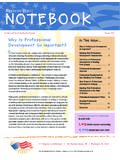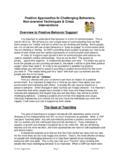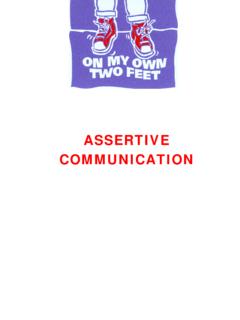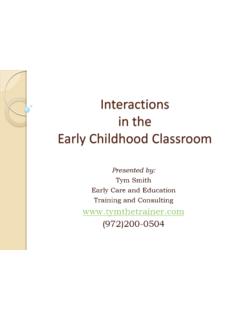Transcription of Cambridge TECHNICALS LEVEL 3 BUSINESS - OCR
1 SuiteCambridge TECHNICALS LEVEL 3 BUSINESSUnit 4 Customers and communicationA/507/8151 Guided learning hours: 60 Version 4 Essential resources and Assessment guidance updated (changes indicated by a black line) February 2017 First teaching September 2016 OCR 2017 1 Unit 4: Customers and communication LEVEL 3 UNIT 4: Customers and communication A/507/8151 Guided learning hours: 60 Essential resources required for this unit: Learners will require access to a suitable BUSINESS teaching environment with computer and internet access to carry out research. Tutors should have a range of BUSINESS communications available which the learners can use for reference, BUSINESS flyers, leaflets, brochures, published accounts.
2 This unit is internally assessed and externally moderated by OCR. UNIT AIM Customers are vital to the success of any BUSINESS . It is essential that businesses consider the importance of the customer experience and ensure that they communicate effectively with them, whether internal or external. Repeat BUSINESS is crucial for future revenue and financial certainty. Businesses depend on customer satisfaction and customer loyalty. To build this you need to know who your customers are and what influences their behaviours. In this unit you will learn the purpose, methods and importance of communication in BUSINESS and the appropriateness of different forms of communication for different situations. You will develop the skills that will help you create a rapport with customers and have the opportunity to practise and develop your BUSINESS communication skills.
3 You will also learn about the legal constraints, ethical and security issues that affect how businesses store, share and use information. First teaching September 2016 OCR 2017 2 Unit 4: Customers and communication TEACHING CONTENT The teaching content in every unit states what has to be taught to ensure that learners are able to access the highest grades. Anything which follows an details what must be taught as part of that area of content. Anything which follows an is illustrative. It should be noted that where is used, learners must know and be able to apply relevant examples in their work, although these do not need to be the same ones specified in the unit content. For internally-assessed units you need to ensure that any assignments you create, or any modifications you make to an assignment, do not expect the learner to do more than they have been taught, but must enable them to access the full range of grades as described in the grading criteria.
4 Learning outcomes Teaching content The Learner will: Learners must be taught: 1. Understand who customers are and their importance to businesses The different types of customers, internal and external customers returning customers one-off customers potential/new customers What influences customer behaviour, customer needs and expectations customer demographics cultural differences location LEVEL of satisfaction how often they need to interact with the BUSINESS Actions businesses may take to manage the customer experience, creating a customer service offer to manage customer expectations prioritising BUSINESS needs - balance how to meet an objective to deliver high-quality customer service with an objective to reduce BUSINESS overheads prioritising customers needs - when different customers have competing needs and not all of them can be met, businesses may have to decide whose needs are to be met Maintaining contact with the customer ( to encourage customer loyalty, to inform, to educate, to provoke a response)
5 Why customer service is important, provides a competitive advantage for businesses helps a public or third sector organisation provide best value for money affects reputation ( It shows customers the BUSINESS cares; it is what customers remember) and how it can be integrated into all aspects of BUSINESS activities First teaching September 2016 OCR 2017 3 Unit 4: Customers and communication Learning outcomes Teaching content The Learner will: Learners must be taught: 2. Understand how to communicate with customers Learning outcomes How to consider the audience requirements when planning communication ( age, gender, special needs, accessibility, knowledge, customer type) The purposes of communication in BUSINESS situations, to inform to confirm to promote to make a request to instruct The advantages and disadvantages of various forms of communication, face to face in writing by telephone text message email websites social media and networking advertisement when considering the purpose, content and audience of a BUSINESS message How to use appropriate BUSINESS formats and styles for written communication layouts The importance of corporate standards.
6 Colour schemes writing guides house styles version control The importance of managing corporate profile through media activity content First teaching September 2016 OCR 2017 4 Unit 4: Customers and communication Learning outcomes Teaching content The Learner will: Learners must be taught: 3. Be able to establish a rapport with customers through non-verbal and verbal communication skills Non-verbal skills, matching body language ( posture, gestures, eye contact) using body language to indicate interest ( smiling and nodding, leaning forward) Verbal skills, tone and pace ( raising and lower pitch and speed of language) clarifying giving compliments avoiding and responding to criticism ice breakers/initiating a conversation closing a conversation addressing customers by name using appropriate convention ( formal situation Mr/Mrs, informal Peter/Anisha)
7 Listening skills, recapping/reflecting back on what has been said understanding instructions interpreting task requirements making notes personal reflection confirming understanding seeking clarification 4. Be able to convey messages for BUSINESS purposes How messages can be structured to convey messages, introduction, ( to people, to topics, headings/subject bar) body/main message summary/recap of key points conclusion ( next steps, action points, recommendations, proposal) inviting/seeking questions frequently asked questions (FAQs) Types of verbal and written BUSINESS communications, verbal communications, o presentations o planned discussions, with people you are familiar with, with people you are not familiar with written communications, o letters o social media ( tweets, blogs, text message/short message service (SMS))
8 First teaching September 2016 OCR 2017 5 Unit 4: Customers and communication Learning outcomes Teaching content The Learner will: Learners must be taught: o websites o emails o notices o newsletter o press release o promotional flyer/brief o report Other considerations for conveying messages for BUSINESS purposes, appropriate technical language ( only using acronyms/abbreviations if they will be understood by readers; technical language may be more appropriate in a one-to-one email than a promotional flyer) use of relevant graphical information/images to support key points accuracy ( use of technical terms, spelling, punctuation) timeliness of messaging 5. Know the constraints and issues which affect the sharing, storing and use of information for BUSINESS communications Legal constraints ( , intellectual property rights, copyright, Data Protection Act, Freedom of Information Act, Computer Misuse Act, Advertising Standards Authority (ASA)) Ethical issues, organisation policies and codes of practice governing the use of information ( use of internet policies, whistle blowing, staff handbooks, contracts of employment) advertising issues ( advertising to children, appropriate content which can be stored or shared)
9 Security issues ( monitoring of phone and email communications, confidentiality, information storage, backup policies and procedures, increasing levels of technology, operational costs) First teaching September 2016 OCR 2017 6 Unit 4: Customers and communication GRADING CRITERIA LO Pass Merit Distinction The learner will: The assessment criteria which are the Pass requirements for this unit. To achieve a Merit the evidence must show that, in addition to the Pass criteria, the candidate is able to: To achieve a Distinction the evidence must show that, in addition to the pass and merit criteria, the candidate is able to: 1. Understand who customers are and their importance to businesses P1*: Explain who the customers of a specific BUSINESS are and what influences their behaviour P2*: Describe actions that a specific BUSINESS has taken in response to the differing needs of its customers P3*: Explain the range of customer services a specific BUSINESS provides and how each area of the BUSINESS has responded to the need to provide customer service M1: Analyse the benefits to a specific BUSINESS and to its customers of maintaining and developing customer service D1: Recommend and justify changes to the customer service provided by a specific BUSINESS in order to improve the customer experience 2.
10 Understand how to communicate with customers P4*: Assess whether or not the form, style and layout of different communications are suitable for the intended audience and purpose P5*: Summarise the corporate standards and corporate profile of a specific BUSINESS and explain their importance to that BUSINESS M2: Explain how a specific BUSINESS manages its corporate profiles through media activity 3. Be able to establish a rapport with customers through non-verbal and verbal communication skills P6*: Demonstrate non-verbal and verbal skills when communicating with a specific customer M3: Review own use of non-verbal and verbal skills when communicating with a specific customer and suggest improvements P7*: Explain the importance of listening skills in building a rapport with specific customers First teaching September 2016 OCR 2017 7 Unit 4: Customers and communication LO Pass Merit Distinction 4.
















